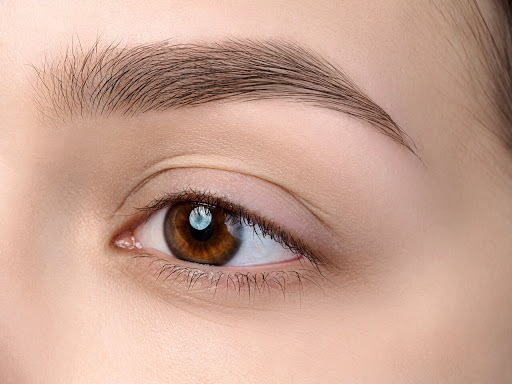Undergoing a brow lift, also known as a forehead lift, can be an exciting step toward achieving a more youthful and rejuvenated appearance. This surgical procedure is designed to elevate drooping eyebrows and smooth out forehead wrinkles, resulting in a refreshed and revitalized look.
While the decision to undergo a brow lift may seem straightforward, many individuals understandably have concerns about the recovery process and the amount of time it will take before they can fully enjoy the results. In this blog post, we delve into the topic of recovery after a brow lift, shedding light on the timeline, expectations, and essential tips to optimize the healing process.
What Is A Brow Lift?
A brow lift is a surgical procedure that reduces the signs of facial aging and rejuvenates the appearance of the forehead, eyebrows, and eyes. It can help smooth wrinkles, remove excess skin, raise sagging brows, and correct hooded or drooping eyelids that make you look constantly tired or angry, leaving you with a youthful appearance. This procedure helps patients look more refreshed and alert by improving frown lines in between their eyebrows, reducing horizontal forehead lines, as well as correcting the placement of the eyebrow and is often combined with blepharoplasty.
How much does a brow lift cost?
How Long Does Brow Lift Swelling Last?
Swelling is a natural part of the recovery process after a brow lift and can vary in duration from person to person. Generally, the majority of swelling subsides within the first two weeks following the procedure. However, it is important to note that residual swelling or minor fluctuations in swelling can persist for several months, gradually improving over time.
Factors such as individual healing patterns, surgical techniques, and aftercare practices can influence the duration and intensity of swelling. Following post-operative instructions provided by your surgeon, including elevating your head while resting, using cold compresses, and avoiding strenuous activities, can help minimize swelling and promote a faster recovery.
Can You Move Your Eyebrows After a Brow Lift?
Yes, you can still move your eyebrows after a brow lift. While a brow lift repositions the eyebrows to a higher and more youthful position, it does not affect the ability to move or control them. The surgical technique used in a brow lift focuses on addressing the underlying tissues and muscles while preserving the natural mobility and functionality of the eyebrows.
It is important to note that immediately after the procedure, you may experience some temporary stiffness or tightness in the forehead area, which can limit your eyebrow movement. However, as the healing progresses, these sensations should gradually subside, allowing you to regain full control and movement of your eyebrows.
Factors That Affect Recovery Time
Recovery time after a brow lift can vary from person to person and is influenced by several factors. Here are some key factors that can affect the duration of recovery:
- Surgical technique: The specific surgical technique used during the brow lift can impact the recovery time. Techniques such as endoscopic brow lifts typically have a shorter recovery period compared to traditional or open brow lift procedures. The endoscopic brow lift is the technique Dr. Moubayed prefers.
- Individual healing process: Each person’s body has its own unique healing process. Factors such as age, overall health, and genetics can influence how quickly an individual recovers from surgery. Younger individuals tend to have quicker healing times compared to older individuals.
- Extent of the procedure: The complexity and extent of the brow lift procedure can affect recovery time. If additional procedures, such as eyelid surgery (blepharoplasty) or facelift, are performed in conjunction with the brow lift, the recovery period may be longer.
- Post-operative care: Following proper post-operative care instructions provided by your surgeon is crucial for optimal healing. This includes avoiding strenuous activities, taking prescribed medications, keeping the surgical area clean, and attending follow-up appointments. Adhering to these instructions can help speed up the recovery process.
- Swelling and bruising: Swelling and bruising are common after a brow lift. The amount and duration of swelling and bruising can vary among individuals. Taking steps to minimize swelling, such as using cold compresses and keeping your head elevated, can help reduce recovery time.
- Individual pain tolerance: Pain and discomfort levels can vary among individuals. Some people may experience minimal pain and discomfort, while others may have a higher sensitivity. Pain management strategies recommended by your surgeon can help alleviate any discomfort during the recovery process.
It’s important to consult with a qualified head and neck surgeon practicing in facial plastic surgery who can assess your specific situation and provide personalized information regarding the expected recovery time based on your individual circumstances.
What To Expect After A Brow Lift
The initial brow lift recovery period typically lasts between 10-14 days. Depending on age and general health factors this may vary from patient to patient, but overall the healing process is relatively quick and easy compared to other forms of cosmetic surgery. To help you better understand the recovery process, we have broken down what you can expect following a brow lift.
One To Two Days After Surgery
Eyebrow surgery is a procedure with a few potential risks. It is an outpatient procedure where you go home the same day. However, the day of surgery and the following few days can be quite difficult as the body rests and recovers from the brow lift procedure. During these days, we highly recommend that patients get a good amount of rest, avoid physical activity, drink plenty of fluids, and follow their doctors’ orders to ensure a quick recovery.
Depending on the type of anesthetic used for your procedure, you may experience nausea. If this is the case, please let your nurse know as medication can be prescribed to help with this symptom. It is also important to mention that while it may not necessarily be painful, there can still be some mild discomfort during these first couple of days after the surgery.
The First Week After Surgery
The first week following any surgery is generally the most crucial in terms of healing and recovery. To begin with, you should avoid taking showers or washing your hair for at least two to three days after surgery. Using gentle soaps recommended by your surgeon once these days have passed will help reduce the risk of infections or complications.
In addition to this, it is not uncommon for there to be some swelling and bruising around the eye area during this period, which should start subsiding over time towards the end of the first week. This means that you may be able to see a significant difference in how your eyes look by this point. At the tail end of this week, you should expect to go to your first post-op appointment where sutures at the incision sites may be removed if necessary.
The First Month After Surgery
The weeks after surgery can be nerve-wracking, but fear not! All swelling should have subsided within the next couple of weeks so you will start to look and feel more like yourself and you’ll be able to return to normal activities. Plus, any incision scars are practically invisible and easily hidden with makeup or hair if needed. It’s important that during this time you take it easy and avoid any activities that may strain the area or cause bleeding but the majority of patients resume their daily or work activities after a few days.
As all of your initial recovery symptoms ease, it’s possible to gradually reintroduce your normal life activities such as work or more strenuous exercise. However, even though you have resumed some of your daily routines it’s important to be mindful that the healing process takes several weeks; it can take up to 6-8 weeks for all of the effects of your surgery to reveal themselves and for everything to settle in. The key is patience and understanding as you heal from the procedure!
Tips To Speed Up The Recovery Process
Wound Care
Caring for your surgical wound is an important part of recovering quickly. In most cases, you will need to avoid getting stitches wet during the first 24 hours after surgery and should apply Vaseline on them in order to keep the area moist. When caring for a wound site, thorough cleaning of the skin surrounding the area is imperative. Always use clean soap and plenty of water when doing so, as it helps remove dirt and debris that could cause potential infection. The key to good scar healing is the constant application of silicone based creams/gels that your surgeon can recommend.
Avoid Certain Medications
It is important for those who are about to undergo a surgical procedure to be aware of the medications they should avoid. As part of your recovery plan, you should stop taking anti-inflammatory and blood-thinning drugs such as ibuprofen or aspirin three to five days before your surgery. This will decrease the risk of bruising, which can in turn increase your chances of a successful operation and make your recovery easier.
Limit Activities
Activity limitation is an important part of post-procedure recovery. Following your procedure, it is important to focus on prioritizing rest in order to ensure your body can adequately heal, which means cutting out all vigorous exercise. During the first week of recovery, it is best to take it easy and limit any strenuous activities that could potentially put strain or stress on your body.
Alter Your Skincare Routine
After undergoing a surgical procedure, it is essential to pay attention to the skincare products you use. To ensure that the area heals properly, avoid using makeup products for at least 24 hours after the surgery as it can introduce bacteria into the wound site, causing potential infections. Furthermore, during the first few days of recovery, you should avoid using retinol, salicylic acid, glycolic acid, lactic acid, or any other AHAs or BHAs as they may irritate and delay the healing process.
Book a Brow Lift Consultation in Montreal
If you are looking for a facial procedure that can transform your appearance and leave you feeling more confident in yourself, a brow lift is the ultimate solution. By simply changing your eyebrow position, you can completely transform your face. However, it is essential that you have the procedure done by a board-certified head and neck surgeon practicing in facial plastic surgery such as Dr. Moubayed to ensure you leave the clinic with a face that you are happy with.





